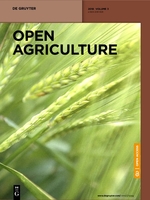In order to enhance sustainable intensification of potato-based cropping systems, especially in sub-Saharan Africa (SSA), there is a need to investigate the economic viability of investing in this lucrative venture. This study evaluated the economic returns under legume intercropping systems using value/cost ratio (VCR) and benefit/cost ratio (BCR) under treatments comprising of potato intercropped with dolichos (Lablab purpureus L.) (P-D), climbing bean (Phaseolus vulgaris L.) (P-B) and garden pea (Pisum sativum L.) (P-G), and a potato pure stand control (P-S). Across the seasons, tuber yield was not significantly (p < 0.05) affected by intercropping with P-D, whereas under P-B and P-G, it decreased by 19% and 16%, respectively compared to P-S. P-G, P-B and P-D recorded 6, 7 and 12% higher potato equivalent yield (PEY) relative to P-S. P-D was the most profitable intercropping system with VCR of 35 and BCR of 5.1 as compared to values recorded in P-S of 31 and 5, respectively. Regression of VCR against PEY resulted in a stronger coefficient (0.98) compared to that of BCR against PEY (0.82) implying that VCR is a simple tool that could be adopted for economic returns to investment studies such as potato-legume intercropping systems.
Increasing potato equivalent yield increases returns to investment under potato-legume intercropping systems.
Citation: Gitari, H.I.; Nyawade, S.O; Kamau, S.; Gachene, C.K.K.; Karanja, N.N.; Schulte-Geldermann, E. 2019. Increasing potato equivalent yield increases returns to investment under potato-legume intercropping systems. Open Agriculture. ISSN: 2391-9531. 4. pp. 623-629.
2019-11-27
CROP PROTECTION, POTATO AGRI-FOOD SYSTEMS, POTATOES
journal_article

